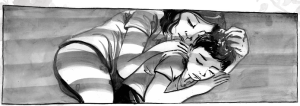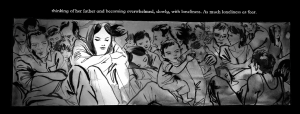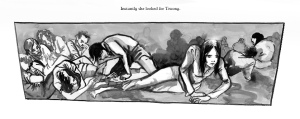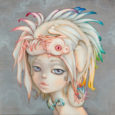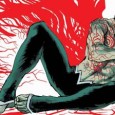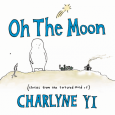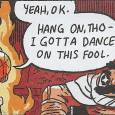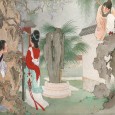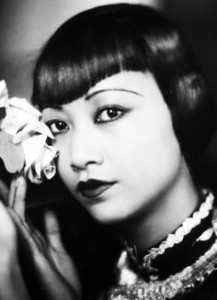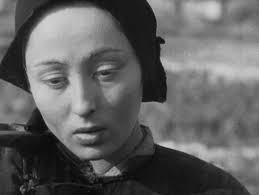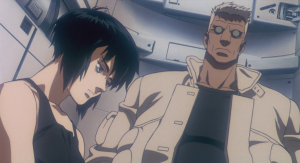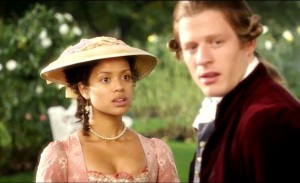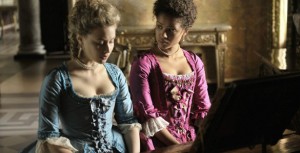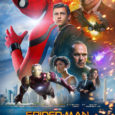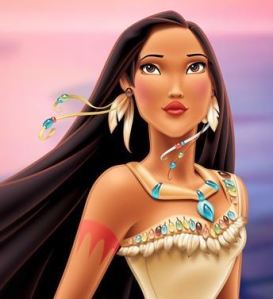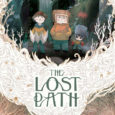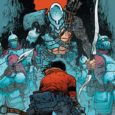By featuring traditional art by Matt Huynh as well as animation, sound effects, music, and video clips, the comic is not only a unique experience but an educational one. It is an example of an internet exclusive medium that needs to be looked at closer and utilized more for storytelling in the digital age. By adding interactive elements not unlike a computer game but still firmly rooted in its illustrative roots, you add additional atmosphere, immersion and context to the piece. A perfect intersection between mediums it allows easy audience (reader) engagement in a highly distractable culture in it’s ability to inform.
For “Artist Spotlight” we were not only able to view and experience this fantastic comic, but were also able to talk to Matt about the project and about his body of work as an artist.
I’m an illustrator and cartoonist from Sydney, but I’ve been living in Brooklyn the past few years. My work draws as much from South-East Asian ink painting as it does the Western superhero comics that I grew up on! I’ve worked across animation, performance, murals, packaging, advertising and editorial, but my first love was comics.
I’d love to do a superhero comic one day. Having that particular genre so saturated in the wider media today allows for greater subversion, particularly with playing in the toybox of existing worlds, characters and conventions. The breadth and possibility for content and voices in comics is much more exciting to me at the moment though.
I noticed while experiencing The Boat and then looking at your work on your website, you state that your style is informed by ink brush painting, or sumi-e and shodo. Where did those influences come from or what brought you to those art forms?
It snuck up on me a little! I grew up in a not-so-devout Buddhist household and although we weren’t very into ritual and ceremony, ink paintings and calligraphy were part of the hodgepodge household decor which I mostly ignored because I was immersed in Western comics as a kid. I taught myself how to draw by following the direction and weight of brush strokes across the pages of superhero comics. I grew up with a little bit of the stereotypical first generation parents’ emphasis upon academics and intellectual achievement, so when I started my little rebellious exploration of art and spirituality, I was introduced to the ideas of dharma art and brush art as meditative practice in local monasteries.
What do you enjoy doing most with your art?
There are ideas about putting ink onto the page as a joining of heaven (the blank page as a sea of expansive possibility or ‘ma’), earth (inspiration or thought) and human (the act). In other words, to be open, consciously and intellectually engaged, and physically energized and connected to making the work. Every stage is really integral and healthy to encourage other. Just physically keeping my drawing hand moving and my eye exercising keeps me out of my head enough to be open to discovering the unexpected. It helps to think through an idea on the page with the medium itself rather than coming up with an idea abstractly in my head about a hypothetical visual and trying to adapt it into physical ink on the page. Ultimately, pulling a brush balanced with ink is simply very sensually satisfying in the most direct way. It’s just animal hair, pulp, carbon and water!
SBS contacted me about adapting Nam Le’s story into an interactive comic. I usually don’t work from other people’s source material because comics can be such a laborious and engaging task, especially with such harrowing material. However, the content, artistry, influences, resources and collaborators enthusiastic to work on a comic that was progressive and innovative was a big incentive for me. Nam Le is an astute writer dealing with themes and a moment in history I am very personally engaged in, and working with the team at SBS offered a chance to work with top notch sound design, animation, production, archival footage and programming to take the presentation of comics online to a new level.Australia is also enforcing abhorrent and regressive asylum seeker and boat people policies that has made clear to me, and my peers, how lucky my parent’s generation were to have a government with a comparatively open hearted, empathetic and compassionate policy. It is urgent to bring stories of some of the most vulnerable people and characters back into a debate that is being told by big media outlets and political pr spin from a world away.
The leadership role of an artist is to be fearless. There’s overt censorship and then there’s the more insidious, subtle pressures that erode the confidence of young artists wishing to engage in humanitarian, activist and political issues. If an artist is worried about paying rent, they’re going to find it difficult to take a risk, speak out, or just draw attention to themselves. I would love to see more young artists and students represent their own stories and experiences in their work, including their client work. A lot of mainstream media feels regrettably forgettable and impersonal, the most obvious example being the lack of diverse roles and stories. I would loathe to think that myself as a daydreaming young aspiring artist, would grow up, finally become an artist, be in a position to communicate and work with a bigger megaphone, only to be afraid to speak up and show myself.
I’m very engaged with the act of making the work to transform myself, whether it is overtly investigating my personal history, looking at experiences from different angles, investigating and teaching myself more about communities or connecting with others by telling their stories to new audiences. Hopefully the artefact or evidence of that process is transformative for audiences too!Despite my best efforts, it’s difficult for me to depart from recurring themes of identity – particularly migration, abandonment, rebuilding, inexplicable loss and absence, race and power. These same ideas run under all my stories and art, whether they’re historical recounts or Gothic fiction, but working in different modes lets me grapple with these themes from new perspectives.For example, I did a comic about my parent’s time in a Malaysian refugee camp. Their recounts were always cursory and romanticized, making it difficult to look directly and objectively at a part of history they’ve long left in the past and aren’t eager to revisit, but it let me empathize with them, not least as a very young couple in love and learning to raise a family in extraordinary circumstances.Then I The Boat based on Nam Le’s short story. Having the benefit of another writer’s research and experience into the same moment in history and involving the same locations and even character types, let me look much more directly at a very personal part of my family’s identity with the benefit of being remove with ‘fiction’.
Would you like to do more interactive comics of this nature in the future?
I’d love to explore more with interactive comics, particularly with an original work created specifically for the digital space and this particular medium.The Boat presented such a huge challenge. It is already enough of a dilemma to adapt source material into the comics medium, but on top of that we had to research and design a new online presentation for comics from scratch, and then introduced disciplines beyond comics into the presentation – footage, animation and sound design. This project gave me a chance to explore the greatest boundaries of interactive and then make some choices about how to tell this one, particular story, but there are so many opportunities for story telling left on the table. We didn’t even use color!The opportunity to make work specifically designed for interactive comics itself, and free from source material, whether that’s history or an adaptation from another medium, would expand the possibilities for what a creator could do with interactive comics.I also toy with the idea of another adaptation, to make a work that is more about the transformation of the work itself. Where the point of the adaptation itself is its departure and possibility for change, rather than its similarities which can come across as a bit of a cerebral, tick-box exercise.
I’m currently working on some animation for rock concert projection, illustrating a short story collection, and putting together posters and projection for an arts festival! An exhibition and more writing is further down the pipeline, always being chipped away at.
Thank you to Matt Hyugh for taking the time to answer our questions. It was a huge honor.
Max Eber
Staff Writer
max@sub-cultured.com
@maxlikescomics
(Editor’s Note: This piece originally ran before the release of Ghost In The Shell.)
Scarlett Johansson landed the lead role of cyborg Major Motoko Kusangi or a derivative thereof in Dreamwork’s live action feature adaptation of Masamune Shirow‘s iconic manga Ghost In The Shell. Whether it’s a new adaptation of the source material or based on the 1995 classic cyberpunk anime film written by Kazunori Itō, directed by Mamoru Oshii has yet to be seen. However due to casting, I’m guessing the adaptation is a broad one.
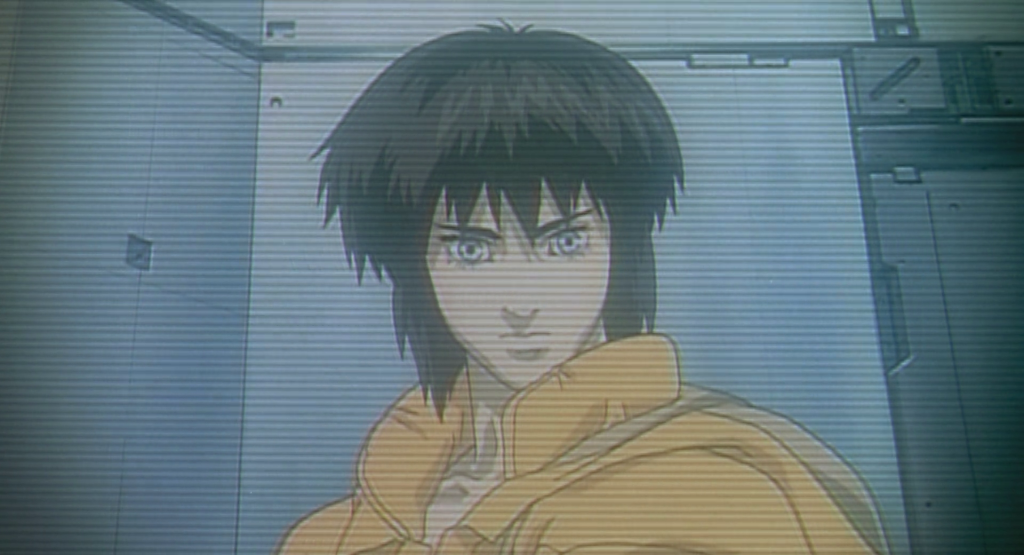
The announcement of Scarlett Johannson’s casting was met with much criticism online amongst fans of the original manga and film, Japanese and Japanese-Americans, film lovers, and sci-fi nerds. Her casting suggests the setting will most likely be changed, or, more likely, the lead’s races will be changed, something that has people rather upset.
Scarlett’s casting (she’s a decent enough of an actress, this is not a slight to her ability) and the root of ire comes at the heels of her starring in the racist film Lucy (whose action scenes were most likely the clincher to offering her the role for this), and points to the repeated trend of Hollywood adapting Japanese source material or properties with Asian casts but never keeping either the cast or locale. The recent Godzilla film is one such remake (of a remake). Disney’s recent Big Hero 6 while a solid, heartfelt film is another example where while the source material is not Japanese, the cast was. For the animated feature however they kept the Japanese aesthetics for their fictional San Frantokyo but racebent the entire Japanese and Ainu cast to only having two half Japanese characters. Last year’s sci-fi romp Edge of Tomorrow is another example of anglicized casting (Tom Cruise, Emily Blunt) despite being based on a light novel and manga series All You Need Is Kill by Hiroshi Sakurazaka. It could have been a great chance for an Asian dual lead film. But we chose not to do that. The laughable Dragonball: Evolution probably takes the crown as the prime example of Hollywood’s poor insight into adapting Japanese source material and should stand as a warning to these attempted remakes. Removal of original Asian characters and replacing them with white characters and actors, is called whitewashing and it’s a problem.
Whitewashing is common in Hollywood. I get it though. Demographics and needing names to sell a picture in the US is pretty standard, you really cant do a mainstream movie without them, but you cant teach people otherwise to be more accepting if you keep it all the same. American films are more global than ever. People in other countries watch our white casted films yet we can’t watch casts with theirs much in the same manner. That’s a problem. China has been making or breaking some of our films from being flops or not, and yet we continue with euro-centric casting.
Historically characters that were or are meant to be Asian are often just made white (2008’s 21) or they (often for comedic effect) are kept Asian but are cast with white actors made up in brown and yellowface. This was really prevalent through most of the 20th century and classic Old Hollywood. Examples include the Charlie Chan series, Katherine Hepburn in Dragon Seed (1944), Jean Simmons in Black Narcissus (1947) and notably the uber racist caricature played by Mickey Rooney in the otherwise much loved Breakfast at Tiffany’s (1961). And that’s just the tip off the iceberg.
It’s been a problem in film history from its inception and as far reaching as films like Broken Blossoms (1919). The most notable case of yellowface and whitewashed casting controversy was most likely Luise Rainer getting cast in the China based drama The Good Earth (1937) as the main lead O-Lan while actual Chinese-American actress Anna May Wong, while suggested for the role, but due to a rule at the time forbidding on screen interracial couples, was ultimately offered the unsympathetic supporting role of the seductress Lotus instead.
It was an offer she was used to as she struggled throughout her career to get non “dragon lady” roles and this more or less was the last straw. It offended her and she refused it with her saying to producers “You’re asking me – with Chinese blood – to do the only unsympathetic role in the picture featuring an all-American cast portraying Chinese characters?!” The snub more or less made her leave Hollywood for a while.
Lotus went on to be played by a white woman in yellowface. Rainer won Best Actress at that
year’s Oscars for her portrayal of O-Lan.
For more modern examples of whitewashing and yellowface look no further than the recent Cloud Atlas and nearly the entire cast of the live action version of Avatar: The Last Airbender. They did it to Khan in the latest Star Trek, and they’re doing with the new forthcoming Freddie Mercury biopic (surprise Freddie Mercury was Indian, not a white British guy!). Asian actors and actresses are routinely sidelined since film became a thing and people are sick and aggravated over it.
While some Asian to American media remakes like The Ring are generally good films in their own right, and yes I personally believe some material from Japan is acceptable to freely remake for American audiences , just as people may adapt an American novel overseas, but Ghost In The Shell is not one of such properties. It’s too intricate. Like Akira it is just too Japanese to take and remove it contextually from Japan. You can’t take Motoko away from being Japanese.
The Major, Motoko Kusanagi is a famous Japanese icon, and while her body chassis is artificial (purple-black hair and all) and could technically look any way she wanted she, the person inside the machine, is Japanese. Her character is Japanese. The way she acts and her approach to things is very Japanese. To change all that, changes the character entirely. Who will she be if she’s white? Major Ruby Monahan? To change Ghost In The Shell to not be Japanese means you remove a lot of what makes it…it. I personally don’t think it can stand well without it. To remove Kusangai makes it not Ghost In The Shell. To keep her Kusanagi by name but present her as white (a white chasis!) would be a spit in the eye to anyone who is of Japanese heritage.
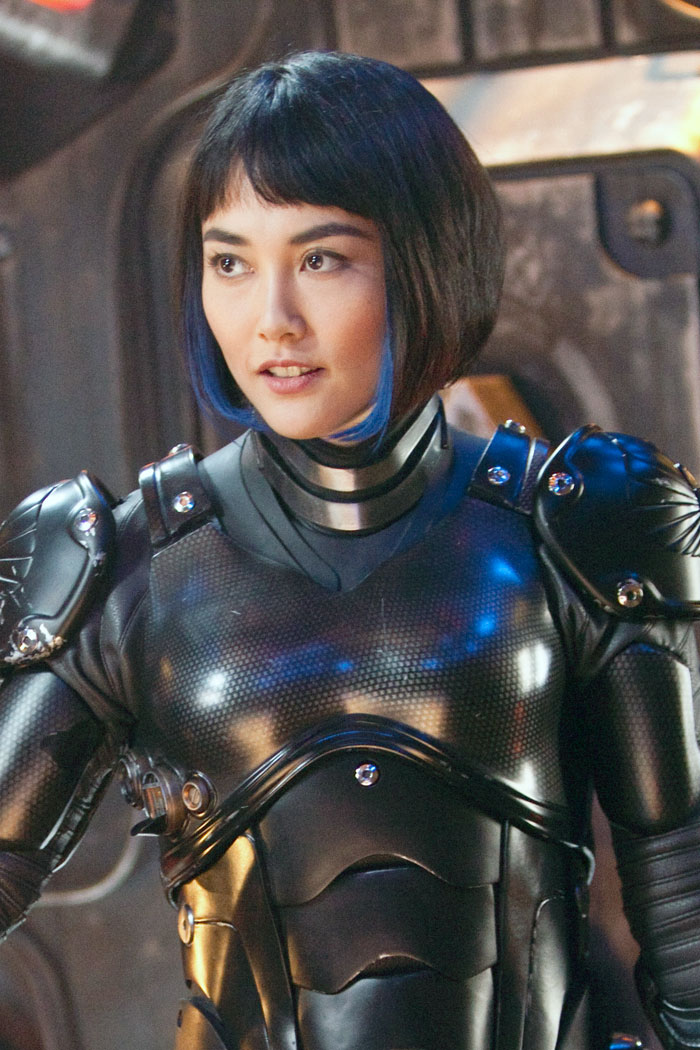 Many have pointed out that Japanese actress Rinko Kikuchi, Oscar nominated, and currently the highest profile Asian actress in Western film due to her nominated role in Babel, her recent role in Pacific Rim and her new film Kumiko the Treasure Hunter, would have been an ideal casting choice (I feel opening it up to other Japanese and Japanese-American actresses, possibly casting an unknown wouldn’t have hurt either). And I agree. She would have been perfect. I think that would have been great and would have solved this issue and ire. Proper representation regardless as to where they set it. Do you know how much that would have meant to people? I would have been on board for this film.
Many have pointed out that Japanese actress Rinko Kikuchi, Oscar nominated, and currently the highest profile Asian actress in Western film due to her nominated role in Babel, her recent role in Pacific Rim and her new film Kumiko the Treasure Hunter, would have been an ideal casting choice (I feel opening it up to other Japanese and Japanese-American actresses, possibly casting an unknown wouldn’t have hurt either). And I agree. She would have been perfect. I think that would have been great and would have solved this issue and ire. Proper representation regardless as to where they set it. Do you know how much that would have meant to people? I would have been on board for this film.
But unfortunately ScarJo’s casting has also in my opinion shown the producers hand and it seems to suggest, just going by her casting they’ll be going the “action film” route for this iteration, and probably would be that way with or without Scarlett, and that is bad.
Why is that bad? Because it’s really not an action film. Not quite as people are used to anyway. While it influenced and birthed many action sci-fi titles and films since its creation, in contrast Ghost in The Shell itself is not entirely easy fare to digest. The original film adaptation is an exercise in restraint and is not a popcorn muncher the way American audiences tend to like them. I am generalizing, of course, but as a rule of thumb the 1995 film is way too slow, way too cerebral and above all way less action oriented than you’d think it would be if looking at the cover or material for it.
There’s a whole lot of Eastern and Western rooted philosophizing around concepts of the self, self consciousness and identity (and the blurring boundaries between man and machine), with a fair bit of action and political intrigue for good measure too. It’s dense material. The AU television series Stand Alone Complex is notably more digestible but is still a rather plodding and lo-fi politically bent procedural for a series otherwise drenched in high-tech gear and robotics. In the end even that series still espouses the original film and manga’s philosophies and explores the same themes many of which depend on Japanese theory and thought. To shoehorn that into a guns blazing action film of general mainstream American taste is sort of misunderstanding the material. 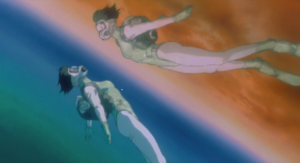 Casting Kusanagi as anything other than Japanese shows that core misunderstanding.
Casting Kusanagi as anything other than Japanese shows that core misunderstanding.
Maybe they will keep it philosophic and audiences will like it. I hope so. I’ll gladly eat my hat. I doubt Sanders can direct a film that delicate judging by his past and only feature length work, Snow White & The Huntsman. While doubtful, I’d like to see him try. I’m always up for seeing someone try considering he’s such a new director. From an audience reception standpoint it is important to note America has taken well to pseudo-cerebral action films as of late, Christopher Nolan‘s Inception (2010) and Darren Aronofsky’s Black Swan (2010) were popular. It should be additionally noted that both of those films were heavily influenced by the sadly now passed director Satoshi Kon and both films featured scenes and themes (how topical) directly ripped from his anime films Paprika and Perfect Blue respectively. Americanized and repackaged Japanese material. But point is…people did like them. So who knows? The concern still stands. The casting for this still offends.
Like the Major herself regarding her humanity I’m really uncertain and very cynical Hollywood can pull this film off due to the insensitivity shown from the starting gate by this casting and what it can imply for the rest of the feature. Hopefully I am proved wrong for the latter. What is clear however is that they’ve removed for this iteration the presence of a great Asian (not to mention bisexual) character and struck down the chance for an Asian actress to be featured at the helm of a blockbuster Western action film and handed it over, yet again, like O-Lan nearly 80 years ago (80 years!), to a white woman. And that’s a really big turn off.
Belle is a refreshing and important film to emerge from a long line of actual BBC helmed and or in this case, BBC-style ( I can’t believe it’s not BBC!) historical drama, romance, and classic novel-to-film treatments.While some said literary productions, mini-series and the like have begun to do more color-blind casting for historical dramas; the general atmosphere of said dreamy dramas is always…really white. I mean, yes, many characters in Dickens, Austen, Bronte and the like were white, but it’s 2014; about time to take some creative liberties. Give me a black Elizabeth Bennet already.
Belle is so far one of the few that gets us close to that, and in fact goes far beyond. It’s important and stands out because it’s lead is a woman of color, based on an actual person. That alone is striking and different. And yet with this film’s romance plotline’s ultimate predictability (that comes with the genre) and genuine earnestness, makes it no different than the sea of historical romances that have come before and will come after. It belongs. Which is the point, and a good thing. It’s not often you get a period film with characters of color as the lead, let alone one with an underlying romance granted to them. God forbid non-white people fall in love and are allowed to be vulnerable. It is a shame it’s so infrequent in Western film, particularly of this genre, because director Amma Asante and writer Misan Sagay with Belle shows how it can be effortlessly done. It’s not a stretch or a chore. It’s literally the same. To suggest otherwise or it impossible is ridiculous.
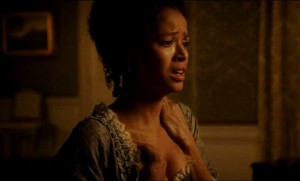
A heartbreaking scene where Dido ( Gugu Mbatha-Raw) melts down as she looks into the mirror. The film shows Dido’s struggle amongst the microagressions of the period despite her genteel upbringing.
HISTORY LESSON:
The film with its “and the kitchen-sink” all-star cast of British actors follows a dramatized life of the real 18th Century lady of color, Dido Elizabeth Belle (portrayed beautifully by Gugu Mbatha-Raw). Dido, illegitimate daughter of Admiral Sir John Lindsay (portrayed in a more or less moving cameo by Matthew Goode) and a black woman named Maria Belle, grew up as a free gentlewoman in the house of her great-uncle, William Murray, 1st Earl of Mansfield (Tom Wilkinson) after her mother dies. She lived there alongside her white cousin, Elizabeth Mary Murray (Sarah Gadon) whilst her great-uncle, who happened to be Lord Chief Justice, had to tend to large, controversial and racially based cases, Somerset v Stewart and the Zong massacre. His verdicts on both cases marked steps towards abolishing slavery in Britain, with his verdict for the former case ruling that slavery had never been established by statute in England and was not supported by common law. (Not to say that cleansed Britain of its horrific colonialism and treatment of peoples in India, Africa, China, and Australia among other places for the next 200 years to follow).
The film chose to follow the Zong case, filling in the gaps of what we know about Dido’s life as both a lady and as an heiress after the death of her father abroad. It elaborates greatly but shows how Dido is controlled by the strict racially based social constructs that even her family, who loves her, must more or less adhere to. She is not a servant; but she is not allowed to dine with the family when guests are over, rather is deemed Elizabeth’s lady companion later in the parlor. She is technically wealthy, especially after her father’s passing, but her skin denies her the perceived eligibility that her cousin has amongst the upper class. It’s all surprisingly very Austen. And the sensitivity shown in how it affects Belle; what she pays attention to (the paintings in her Great-Uncle’s gallery, sign paintings, etc of white people and black servants, thus her hesitation and anxiety to being painted alongside Elizabeth) is also well done.
Whilst a bubbling attraction occurs between young Dido and abolitionist preacher and aspiring lawyer John Davinier ( Sam Reid, in a revisionist version of her real life eventual husband) from the local country parish, you see a gradual thawing of her family and her eventual integration and introduction as a lady alongside her cousin. The dealings of the icy social constructs of the time, both as a woman and a being of mixed race are on full spotlight as Dido deals with her and particularly Elizabeth’s coming out. These are perhaps some of the best moments of the film as they bring out rather layered emotional content. It’s these shades of grey views of racism displayed during this portion of the film that are the most effective. It mirrors real life and institutionalized racism still is in place today, even in kind liberal people.
Whilst in real life her white cousin Elizabeth was also, I believe, an heiress, and wealthy, in the film they are painted as more or less inverses of each other; Dido’s father loved her, and following his death, she is wealthy, but has no position and her heritage impedes her. Elizabeth’s father is painted as negligent and whilst visually the perfect English Rose, she is given no dowry so while she has a title, she was not wealthy and or have property and thus not very desirable to upper class young men. It is then Dido who ultimately gets engaged before her cousin. Despite this; the relationship between the two girls is never truly sour (it’s believed they were rather affectionate in real life if going by the painting of the two women) and this alone is a breath of fresh air compared to what it could have been had it been handled less gently by a more “Hollywood” hand. Their relationship is loving, like sisters. And that is amazing to see on film for any movie with more than one female character regardless of the context.
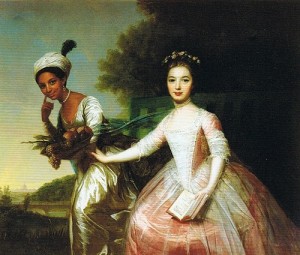
The famous portrait of Dido and Elizabeth, which whilst being painted in the film stirs Dido’s concern and anxiety over being placed as “lower” than Elizabeth in the picture as most black or mixed race peoples are usually depicted, which ultimately does not occur. Elizabeth’s hand on her cousin’s waist denotes affection.
This friction in terms of eligibility between the two girls and their personal pitfalls (having what the other needs more or less) is emphasized during their courting by the snobby and power hungry sons of Lord Ashford; James (Tom Felton) and Oliver (James Norton). This part of the film is most interesting as it explores further that grey area of racism mixed with a great showcase of the etiquette, class and gender politics of that time. Love generally has little to do with marriage. Furthermore the Ashford’s are racist and classist so it is interesting when Oliver, the more handsome but unfortunately poor second son (he effectively mirrors movie Elizabeth in his circumstances) seemingly falls for Dido, it is in a way rather sweet. His boyish interest and proposal appears earnest, but he is also still racist. He loves her, but he also “forgives” her heritage and calls her exotic. This treatment of race is very, very effective as the microaggressions that even Oliver spouts prick very sharply. Few films pay attention to that kind of underlying racism. Tom Felton’s James is more outright racist, or rather the face of what we’ve come to expect racism to look like as opposed to Oliver’s more subtle kind. While first interested in Elizabeth; upon learning she is poor, James is no longer invested and from then on is a rather cartoonish foil disapproving of his younger brother’s interest in Dido culminating in him harassing and assaulting her (what he does exactly is a bit ambiguous). As you can expect; none of this goes well.
The performances in the film are sensitive and well balanced. Nothing is too overblown and for the most part entirely organic, with everyone deserving high praise. The dialogue is a bit on the melodramatic side of things, particularly John Davinier, but according to genre that’s not very surprising. Tom Felton’s James is a bit much, but the film showcases a wide spectrum of types of racism and someone had to be the more designated “racist villain” of the film. While well shot, Belle is not particularly stylized in its filming, it is again sensitive, but relatively unfussy. The costumes and sets are pretty, with some great use of color, particularly with Dido and Elizabeth’s gowns.
One big quibble, and this is the horticulturist and dramaturg in me; the gardens and a scene of roses being arranged feature anachronistic long-stemmed hybrid tea roses which were not bred until the late 1800s. Most roses back then in gardens were once bloomers or china roses which are shrubby and have short nodding stems. While I realize it is minor, it took me out of the film for a split second, but I know for most viewers this wouldn’t be an issue. Additionally, the last third of the film is when the fiction really starts taking the reigns and the former formal prickliness and filigree cage feeling of the era is sort of ditched and more modern sensibilities and movie storytelling creep in. Dido becoming increasingly involved in the Zong case, stealing maps and sneaking out to meet with John at pubs to converse with fellow abolitionists (never noted to have ever happened in real life), as well as the script delving into discussions about marrying for love over position. Overall those parts become a bit much. It’s not terribly jarring but after a much more delicate first half or so with more subtleties, it was a bit less effective and the end, for me, with Dido sneaking into the court galley, proved slightly clunky (though moving nonetheless).
That third quarter ultimately does not hurt the film too much, as I still recommend it as it is indeed a beautiful, sensitive, and earnest film. It’s an important one. Its role in providing a film amongst the longstanding tradition of classic Hollywood biopics, but for a mixed race woman from history is so sorely needed that it must be noted. Add in that the script was written by a black woman, directed by a black woman, and stars a mixed race woman; it’s is nothing short of astounding (which, it shouldn’t be, as that should be commonplace). The Western film industry, given it’s terrible percentages concerning films with poc leads and directors, women leads and directors, and especially poc women lead films and directors behind it, needs to catch up. Other directors; writers, take note of Belle. Everyone else; go see it while you can. Now.
Film Review: Belle
MPAA Rated PG. Running time: 105 mins
Directed by Amma Asante; written by Misan Sagay , director of photography, Ben Smithard; edited by Victoria Boydell and Pia Di Ciaula ; music by Rachel Portman; production design by Simon Bowles; costumes by Anushia Nieradzik ; produced by Damian Jones; released by Fox Searchlight Pictures (in US).
WITH: Gugu Mbatha-Raw, Sam Reid, Tom Wilkinson, Sarah Gadon, Penelope Wilton ,Miranda Richardson, James Norton, Tom Felton, Alan Mckenna, Bethan-Mary James and Matthew Goode.
See you all real soon
Max Eber
max@sub-cultured.com
Twitter: @maxlikescomics
Disney is something that people either love or hate. I’ve been pretty nauseated with them as of lately. Like, patience? Down to nothing.
Admit it, Disney’s been doing some questionable things (more so than usual). Not knowing what’s been going on? Let’s break everything down:
I. Acquisitions, Property neglect, Copyright and Cultural Appropriation
While its something I particularly don’t care much about, Disney’s consumption of entertainment entities (Marvel, Lucasfilm) as if they were Cronos cannibalizing his children has brought lots of concern and criticism. The dismantling of LucasArts in particular after the acquisition was a sour move. The prompt success and then absolute neglect once again of The Muppets franchise (seriously the Muppet area and Muppets 3D attraction and their overall presence in Hollywood Studios at Walt Disney World? Needs a big revamp and revitalization, come on guys you know you want Miss Piggy walking around there dressed like a 40s movie star) has been rather disappointing. They should have an active presence if you want to keep them an ongoing and profitable franchise, which going by the film, they are.
The biggest part of this? Earlier this week Disney found itself standing overtly in the wrong ( well they sort of already do perpetually) when it comes to being culturally sensitive, with the recently revealed future Pixar Dia de Muertos copyright application debacle. While the problem has since been rectified after criticism and an uproar of disapproval there is still the looming problem or concern of the film’s impending merchandise and marketing entirely commercializing (even more than it has already been) a very exclusive and passionate holiday to an extent where non-Mexican or those of Mexican descent (ie white suburbia) decide to celebrate it too (for all the wrong reasons, for example like the already appropriated and abused Cinco de Mayo). Merchandise most likely will be showing images formerly only meaningful for those who celebrate and most likely wouldn’t like it being shared. So there is certainly a weary cloud over the movie despite it not being due for a while so let’s hope Pixar inverts expectations in what it is actually about or what it teaches viewers. The moral of Nightmare Before Christmas was all about avoiding appropriation of other people’s cultures, Disney may want to look back at the properties they distribute and get a good lesson from them.
II. Frozen
Additionally the reveal or rather the (rumored) incomplete leak of Princess Anna’s rendering for Frozen looking for all the world like like a Rapunzel clone with a dash of Kirsten Bell DNA and being yet another Caucasian, blue-eyed blonde (a problem I will later return to and discuss) was met with mixed reaction and a lot of disappointment (mostly for her generic design). Additionally the continuation of Euro-centric locations and the perpetuation of Caucasian leads is frustrating or at the least boring while the overall questionable overhaul (as in complete disregard and gutting) of the original plot of The Snow Queen has many including myself rather miffed. The original story is very feminist; a young girl Gerta actively goes on a quest to rescue her best friend, a boy Kay, after he was kidnapped by The Snow Queen following a shard of an evil mirror getting stuck in his heart. Along the way she is only helped by other female characters; the Princess, the Robber Girl, etc. Disney at one point was to follow this plot-line as they had many concept artworks for Gerta and Kay. It is also rumored the first 9-15 minutes of the film were actually animated (traditionally) and it was touted by those who saw it as some of the most beautiful work they’ve ever done, but it was ultimately all scrapped during the give or take ten years the project has been in development.

Still Eurocentric, but look at Gerta and Kay. How cool would they have been?
In the new story that they developed to replace the scrapped straight adaptation, Gerta and Kay are gone. Instead of a heroine that could easily have been placed in the Princess line for her bravery and courage despite not being royal, like Mulan, we now have the lead of Princess Anna from the getgo. The plot they’ve settled on is that Princess Anna is on a quest to confront her obviously estranged sister, the Snow Queen and break a curse and save her kingdom from presumably, well freezing. On the way she is now joined by a male character companion or escort, Kristoff, along the way (hopefully they will pull an inversion and not have him as the love interest). While it is too early to completely disregard the film, its changes have brought a lot of ire.
I personally feel the changes are petty and the original storyline is fine and perfect for today’s audiences with some tweaks. You also could have applied the original storyline to anywhere in the world where snow (and thus by proximity, mountains) are featured or rather contrasts with another section of that land. You could have had an Ainu, Mongolian, Tibetan or Peruvian Snow Queen story. It’s like with the floating lanterns from Tangled, the lanterns being a tradition in Southeast Asia. Instead of appropriating the lanterns because they looked cool, that film could have easily just been set in Southeast Asia to begin with. Disney did Hamlet as lions you can put a Scandinavian fairytale elsewhere. I mean I can’t even figure out where the hell The Little Mermaid is supposed to be; it had no particular location (that was NOT Denmark) but it looked vaguely Mediterranean on the Turkish side of things to me. Anyway, Disney has kept it safe by keeping the Scandanavian location and look and ethnicity of the characters for Frozen but got rid of everything else bar the titular Snow Queen. Absolutely groundbreaking.
Concern has also been additionally brought up with the appropriation of traditional Sami clothing in Anna’s design and its impracticality for actually keeping her warm. The Sami is a specific indigenous Scandinavian people who have long been discriminated against, abused and actively persecuted for their dress and religious practices and artifacts. So far Anna or rather her people have not been shown to be Sami. So there are a lot of things people are worried about.
III. Their Princess Problem & Blonde Ambitions
So not only is Disney already walking on eggshells(and glass, and rusty nails), but they additionally have gotten a lot of flack for the recent Princess “redesigns” with the girls of the Princess line given new tousled and restyled hair, tweaked costumes, and then dipped in makeup and glitter. The continued historical and cultural inaccuracies of Jasmine and Pocahontas’s costumes were made worse in their new bedazzled looks.
The redesign of Mulan was particularly awful for being whitewashed, being off model and putting her in makeup she would not want to wear, not to mention wearing golden colored robes (forbidden since that was the Emperor’s color I do believe).
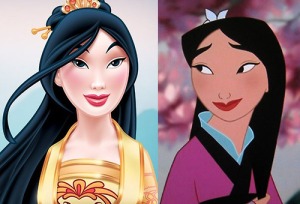
yeah no
The outrage was actually so vocal that Disney actually went and edited it to be less severe and closer to her movie look.
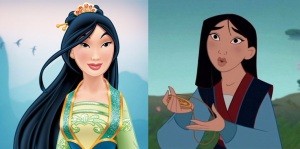
Better. Not Great But It’s Better. Okay. See. Not hard.
Only Tiana exited the redesign unscathed and relatively unchanged except for being attacked with purple eyeshadow. Things quieted down but now with the reveal of the redesign of Merida, who was just “coronated” into the Princess line today, people’s ire have returned and with good reason.
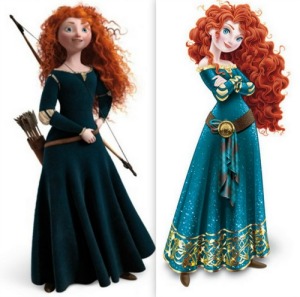
Sigh.
They made her “prettier” which yes, they need to convert her to a flat style to properly include her in merchandise, but it is overt in how they slimmed her down and made her cuter in the face, as well as bustier. This is not very different from some of her dolls, which are generally more stylized and “pretty”. People also dislike that they are neglecting to include her bow and arrow, which could be easily and unobstructively included like the first picture, a move that overall neglect’s her personality. They also put Merida in an amalgamation of her dress on the left, and the tight dress she was forced to wear at her suitor’s trials that she disliked and ultimately ripped in a deemed symbolic moment. This is the same problem as the perpetuation of (if you can even find it) Mulan merchandise and her theme park face characters who walk around in the pink hanfu which she also disliked and then sang a really famous song about how she felt uncomfortable.
The change in Merida has been so disliked that a Change.org petition, “Keep Our Hero Brave!” has at the time of writing this article went viral and has amassed 96,248 signatures and climbing.
Disney has a Princess problem and a serious disconnect.
This is really something Disney needs to mend and overhaul. Be it hire a new artistic director to be in charge of the line. Anything. I know many adore the Princesses. And you’re allowed to. You’re allowed to like pink if you like it. You’re allowed to like glitter and rainbows. And hyper-femininity and romanticism. You’re allowed to be inspired by them and find comfort in them. But you need to realize the line has and perpetuates a lot of problems. Pink can be a problem. This new girly-girl culture perpetuates problems. For example why this is a problem look no further than the progression of LEGO’s, originally marketed as unisex and touting creativity for all now gives a clear divide between “girly” sets meant for girls and sets meant for boys (not that you need to buy into either, but people do and that is the problem). This “girlification” is what they are doing to characters like Mulan and Merida and even Pocahontas, who generally are apathetic or actively uncomfortable with such trappings or completely removed from them culturally. If they have a Disney princess who enjoys being pretty and dressed up but also kicks butt while dressed like that? Or is comfortable either dressed up, made up or dressed down? That’s fine. That’s part of her character. But they don’t have that kind of girl in the line; everyone is made beautiful and glittery because they simply are, even those who don’t wish to be put in that box in their respective films.
Now when growing up I loved and continue to love Snow White and Cinderella whom today are pegged by many as some as the most problematic Princesses in terms of agency (though I’d put that on Aurora who literally had such a small presence or role in the film aside from singing and twirling, crying then pricking her finger and falling asleep it might as well been titled Prince Philip and the Three Fairies). While they are a bit more sarcastic and have more personality than people give them credit for (check out the unused scene of Snow White actively swaying the dwarves to let her stay with a haughty cold shoulder and some sly thinking here, it also explains why she runs down the stairs to tend to the kettle so abruptly in the film) I do realize my two favorites have problems despite my love for the films. That doesn’t mean I can’t still appreciate the skill that went into them from an animating perspective. Quite frankly I enjoy my Disney films dark, painterly with jewel-tones, black, brown and a degree of the Gothic (Snow White, Pinnoccio, Fantasia, The Adventures of Ichabod and Mr. Toad) anyway so the new plethora of pink, purple and other candy colored but sterile world the Princesses now inhabit forever smiling is rather scary to me.
Furthermore, diversity is an issue. With Merida’s crowning today we have just added a second Caucasian, blue eyed princess to the line in under three years. And now with the upcoming Anna from Frozen later this year which means three Caucasian, fair eyed girls are to be added to the line in pretty rapid succession since they introduced Tiana in 2009. It feels as if “Yeah we just had the first black Princess for the line, quick introduce THREE MORE WHITE ONES”. Granted Merida was always on the fence if she was to join them, but she has, so you have to look at what is now going on here when it comes to the diversity in the Princess line since she is now included. Official PRINCESS franchise stats:
White Princesses:
Ariel
Aurora
Belle
Cinderella
Rapunzel
Snow White
Merida
future (pending): Anna.
Total: 8
Princess of Color:
Tiana
Pocahontas
Mulan
Jasmine
Total: 4
Thus 1/3 of them are poc.
2/3 are white.
Of the white characters:
Aurora (from ash-blonde to golden blonde in merchandise)
Cinderella (in merchandise only)
Rapunzel (large preference for pre-haircut and pre-princess identity in merchandise)
and now Anna are blonde or blondish.
Thus:
1/2 of the white princesses are blonde in their merchandise.
SO overall in the official Princess line:
1/3 are Caucasian blonde or marketed as blonde/shades of blonde.
1/3 are Caucasian of various other haircolors.
1/3 POC characters each with only 1 representative of their respective races and only from one section of the world. No Latin Americans. No other South American, Asian, Indian or Southeast Asians Princesses.
That is not right. Not when white people are not the majority on this planet.
1/3 of all the princesses are blonde.
BLONDE.
What is with the blonde?
Disney’s obsession and perpetuation of blondeness or reinforcment that “Blonde is better” can be best seen in Cinderella, the often poised “leader” of the group in all her platinum blonde glory. That is ironic since she is not actually blonde in her film, they just keep making her blonder to match merchandise with each “restoration” and release. Her original haircolor, while perhaps could be seen as strawberry-blonde at the lightest, would in my opinion look more like Judy Garland’s tawny hair in Meet Me In St. Louis. That shade was particularly popular in the late 40’s and 50’s of course when the film came out.
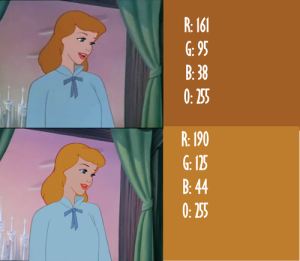
top: Older probably VHS version
bottom: Recent “Restored” DVD and BluRay. Notice the restored version also gives her fancy melon lipgloss first thing in the morning!
And then compare

Who dunked her head in lemon juice and bleach.
It’s gotten so bad and engrained that Cinderella is platinum Barbie blonde via her merchandise that people last Thanksgiving were actively tweeting confusion and were mad that the Cinderella from the Rodgers and Hammerstein’s revival show performing a segment during the Macy’s Thanksgiving Day parade was GASP, a brunette! That is the extent of the Disney merchandising machine. It’s brutal.
I know they’ve been doing this forever, Mary Blair’s concept art did have her with straw-blonde hair, but that wasn’t what they went with for the film. They are aryanizing an already white-bread character. Like why? Not all her merchandise gets it wrong, but how would things be if they actually marketed Cinderella with her original hair color in all her merchandise? Such a discrepancy doesn’t make much sense to me.
Really, when it comes to the princesses, white girls and boys, if they wish, can pick and choose who they like best or who resembles themselves or relate to the most from the list of white princesses since there is such a wide gamut of looks and personalities. It’s easier to find yourself represented to a degree at least physically with how many looks they have. Meanwhile girls and boys who are Asian can only look to Mulan if they want someone who looks anything like them which is problematic since not every Asian girl or boy is Chinese. The same issue comes up with every single Princess who is a poc. I know it’s not exclusive, any person can look to any other Princess of any race and consider them their hero or role model and relate to them even if they don’t look like them, you may not even relate to any of the Princesses and relate to another character and that’s okay too. The fact is there are only four Princesses of color and each are incredibly specific and have to carry a lot of weight in terms of representation for their entire enthnicities when nationality that is impossible. To be that tokenized and used as a blanket, all encompassing character, is inherently racist. I mean Tiana spent 2/3rds if not more of her film transformed into a frog thus eliminating her African American presence on screen anyway. This is about proper representation in popular media. With an already crowded group pushing the POC Princesses usually to the back of the group and them having infrequently available merchandise, what is going to happen once Anna, yet another blonde who will no doubt be Disney’s ticket to sell winter gear, is inducted?
Granted, Disney has tried to do diversity before, Lilo & Stitch stands as one of the most sensitive and accurate portrayals of family life Disney has ever done. It features a positive portrayal of native Hawaiian young women as leads and explores important social issues and struggles. Through Lilo they explore the struggle many kids have being deemed different or odd and having a hard time fitting in. Not to mention Nani’s appearance has always been praised for her (for a cartoon) realistic proportions and believability. Basically most of everything about that movie was amazing.
Sadly, another diverse film, the gorgeously animated but overall ignored Atlantis: The Lost Empire, the very much blatant movie adaptation of the anime Nadia: The Secret of Blue Water, had it been successful would have no doubt added Kida, the actual in-story Princess of Atlantis and woman of color, to the Princess line as well.

You’re too good for the line Kida.
In fact the movie had some of the most diverse of casts Disney has ever had, and perhaps the most active female characters in one film. Aside from Kida you also had Lieutenant Helga Katrina Sinclair, the elderly Wilhelmina Bertha Packard and above all the Puerto Rican mechanic Audrey Rocio Ramirez filling a good portion of the cast. The mixed Black and Native American Doctor Joshua Strongbear Sweet added even further diversity to the film’s leads. It is sad because fundamentally, Atlantis is exactly what a lot of people I’ve seen on social media are wanting from Disney both as a film and the Princesses that people actually want to see. I hypothesize had Atlantis come out later, maybe around now, it would have been a smash hit: It was too early. And that makes me sad.
What Disney needs to do with the Princesses, is instead of making them more glitzy, is to portray them as the heroes they actually were and are. If it means making up more skills and interests for Aurora, Cinderella to do so then so be it. Another thing is that their interactions are often so sterile if interacting at all. It is easier to copy and paste group shots for merchandise but if you made things that depicted them doing what they like to do and interacting with each other instead of just sitting and standing looking sexualized with coy Stepford smiles in staggered group shots would really make all the difference.
Portray Tiana and Snow White cooking together smiling and laughing. Have Rapunzel painting Cinderella and Pocahontas as they weed a garden and pick vegetables, Merida showing Belle how to shoot an arrow, or riding horses together. Mulan teaches Aurora how to fight, or Aurora teaches Ariel to dance. Active characters with personality. Draw them in all sorts of clothes. Work clothes. Casual dresses. Yes I know the allure of royalty and the frou-frou dream of dresses and riches are everything the Disney Princesses are about; but they would have so much more magic if they had kind of life brought to them in merchandise and showed them as relatively real girls with likes, dislikes and show their actual personalities.
Hell, branch out even more and create a “Disney Heroines” line where all the Disney heroines could be used and marketed. They need to slowly stop marketing Cinderella as a platinum blonde, they need to not “prettify” Merida Pocahontas and Mulan, the latter of which they need to stop marketing her in her pink hanfu, and instead be featured in the dress she wore when defeating Shan Yu. They need more merchandise of post-haircut brunette Rapunzel. They need to actually have merchandise that features Pocahontas, Mulan, Jasmine and Tiana on it and features them more towards the front when with other princesses like Belle, Snow White, and Cinderella. More accurate or respectable costumes for Jasmine (her usual costume is actually pretty much underwear for an ancient Arab culture) and Pocahontas. They need to stop with the Euro-centric settings and learn how to be respectful to other cultures.
And above all, parents need to educate themselves; don’t just offer your child one thing. Do not just offer them the pink Princess world, if they want it, they will ask for it. But it shouldn’t be the only option, just like for Merida in the end marrying right then wasn’t the only option she could take and the movie was all about making her mother understand that – that’s what it’s all about. We can’t keep doing this to ourselves.
So yes, Disney is magical for those that want to believe in it. It can be entertaining and inspiring. But it’s not all sunshine and rainbows (it’s a corporation after all) and we really need to learn to look at it with a critical eye and keep that gaze on it. Because if we do then things may actually change and for the better. Let’s get people’s opinions heard.
Max Eber
Staff Writer/The Doctor
max@ihogeek.com
Twitter: @maxlikescomics
Just shortly after midnight this Tuesday, Marvel let loose the big secret behind the identity of the new Ultimate Spiderman. Almost immediately the media, and fans alike, were spreading the news around the internet like wild fire. As a result, people started to voice their opinion about the new hero, and I have to say I’ve never been more disappointed in not only the human species, but some members of the comic book community, ever. In fact, the entire month of June just seemed to be one giant step backwards from segregation/sexism – from the backlash of Ultimate Spiderman, to the all but openly sexist remarks made by Dan DiDio during San Diego Comic Con on women in the DCU. It truly does seem like race/gender issues in comics have, in essence, tripped up. This is a rant, but hopefully it’ll be a good one, something to add perspective to where we are as a society. So you have been warned, read – but only if care about my opinion. Also, there will be spoilers for the identity of the new Ultimate Spiderman, so don’t even click to see the rest of the article unless you want to know. (more…)


